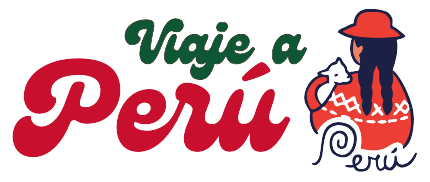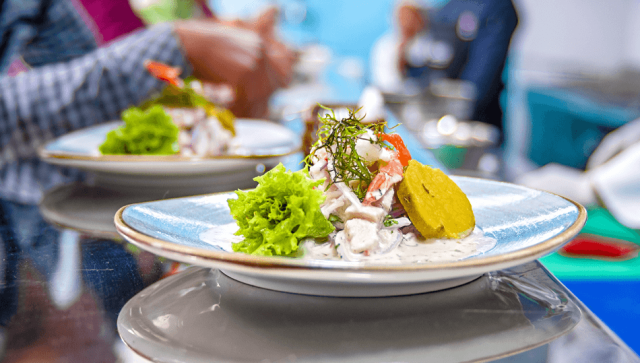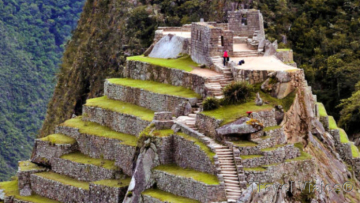Lima , the vibrant capital of Peru , is much more than a city with a rich historical past and views of the Pacific Ocean. In recent years, it has established itself as the gastronomic capital of South America , attracting visitors from all over the world to delight in its exquisite cuisine. The mix of Andean traditions, European influence and Asian flavours has given rise to a culinary offering that is as diverse as it is delicious.
Exploring Lima's gastronomy is like immersing yourself in a journey that connects history, culture and the love of local ingredients. In this blog, we invite you to discover why Lima is the ideal place for lovers of good food. From traditional markets to the most exclusive restaurants , the Peruvian capital promises to conquer your palate.
1. Lima's Emblematic Dishes
Lima cuisine boasts a variety of dishes that reflect its rich history and cultural diversity . Ceviche, considered the national dish , is a perfect example of how fresh ingredients and simple techniques can create something extraordinary. Prepared with fresh fish, lime juice, onion, chili pepper, and cilantro, ceviche is a must-try experience.
Another iconic dish is lomo saltado , a delicious combination of beef sautéed with onion, tomato and soy sauce , served with French fries and rice. This dish is a tribute to the Chinese influence on Peruvian cuisine . Also notable are anticuchos, skewers of beef heart marinated in spices, and causa limeña , a cold dish made with yellow potato, yellow chili and various fillings.
The richness of Lima's dishes doesn't stop here. Ají de gallina , a creamy dish made from shredded chicken, soaked bread, milk and spices, is another culinary gem worth trying.
2. Traditional Markets: The Soul of Lima Cuisine
To understand the essence of Lima's gastronomy , it is essential to visit its traditional markets . One of the most notable is the Surquillo Market , where the colors, aromas and flavors of fresh ingredients create a sensory spectacle.
Here you will find everything from tropical fruits such as cherimoya and camu camu, to fish and seafood of exceptional quality. Food stalls within the market offer local delicacies such as tamales and chicharrones , allowing visitors to try authentic dishes at affordable prices.
Another iconic market is the Mercado Central de Lima, a place where local merchants and chefs acquire the essential ingredients for their culinary creations . Visiting these markets is not only a gastronomic experience , but also a cultural one , as they represent the heart of daily life in Lima.
3. World Class Restaurants
Lima is home to some of the world's best restaurants , recognized in prestigious international lists such as the 50 Best Restaurants . Central , led by Virgilio Martínez , offers a gastronomic journey that explores Peruvian biodiversity from the Andes to the Amazon. Each dish is a work of art that combines modern techniques with indigenous ingredients.
Maido , by chef Mitsuharu Tsumura, is another must-try, standing out for its Nikkei cuisine that fuses Japanese and Peruvian flavours . Dishes such as the "Nigiri de Lomo Saltado" or the "Sudado Nikkei" are an example of this innovative combination.
We cannot forget Astrid & Gastón , the restaurant that put Peru on the world culinary map. Founded by Gastón Acurio, this place celebrates the tradition and creativity of Peruvian cuisine with tasting menus that surprise with their sophistication.
4. The Influence of International Cuisine
Lima is also a melting pot of cultures , and this is reflected in its gastronomy . The Chinese influence is evident in the chifas , restaurants that offer dishes such as fried rice and stir-fried noodles . On the other hand, Japanese immigration introduced sushi and other dishes that today are mixed with local ingredients to create Nikkei cuisine.
Italian food also left its mark, especially in desserts and bakeries. One example is Doña Pepa nougat , a traditional sweet that combines European flavours with Peruvian ingredients.
5. Typical Desserts and Drinks
You can't talk about Lima's gastronomy without mentioning its desserts and drinks. Suspiro a la limeña , a sweet cream covered with meringue , is the city's most emblematic dessert. Other outstanding sweets include picarones , made from sweet potato and pumpkin flour , and alfajores filled with manjar blanco.
As far as drinks go , the pisco sour is the undisputed king. Made with pisco, lemon, syrup, egg white and Angostura bitters , this drink is a national symbol . For something less strong, chicha morada, made with purple corn, cinnamon and fruit , is a refreshing and delicious option.
6. Gastronomic Experiences in Lima
The city offers unique experiences for those who want to delve deeper into its gastronomy. Food tours are a great way to explore the flavors of Lima , combining visits to markets, cooking classes, and tastings at local restaurants.
Another popular activity is attending a cooking class with professional chefs, where you will learn how to prepare dishes such as ceviche and lomo saltado. These experiences are not only educational, but also a fun way to connect with Peruvian culture.
Lima is not only a tourist destination , but also a gastronomic paradise that delights those who visit it. From its iconic dishes to its world-class restaurants , the Peruvian capital offers an unparalleled culinary experience . The combination of tradition and innovation has placed Lima at the center of the global gastronomic scene.
So if you are a food lover or simply want to discover new cultures through their flavours , Lima is the perfect destination. Prepare your senses for an unforgettable journey through the culinary heart of South America.
We invite you to learn more about Peru here: Blogs from Peru.




